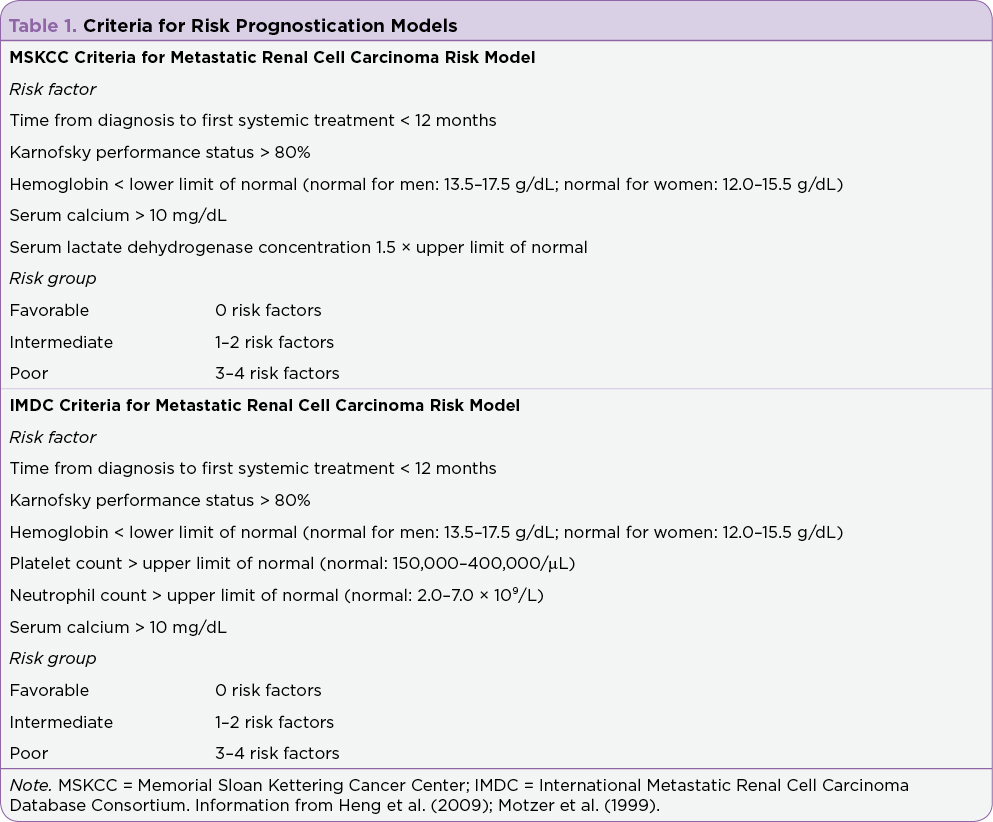Abstract
Case Study
This patient case is fictional and does not represent events or a response from an actual patient. The authors developed this fictional case for educational purposes only.
Brady, a 54-year-old white male, was diagnosed with metastatic renal cell carcinoma (mRCC). Two and a half years prior, he had undergone a complete left nephrectomy for clear-cell RCC, with clean margins and negative lymph nodes. Post nephrectomy, he was routinely surveyed (every 3–6 months) by radiologic imaging. After 15 months of monitoring, a CT scan revealed small nodules in the left lung. Repeated scans were ordered to be taken in 6 weeks to assess growth kinetics, wherein an increase in the size of a number of nodules was detected. Of particular concern was the location of one of the larger nodules very close to a bronchus. Consequently, a needle biopsy was performed, which recovered malignant cells consistent with mRCC. It was then decided to begin systemic treatment for mRCC. Prior to starting treatment, Brady’s Eastern Cooperative Oncology Group performance status (ECOG PS) was 0, and he had a Karnofsky score of 90, as he had only slightly diminished stamina that was considered disease related. Accordingly, he was classified as favorable risk by both Memorial Sloan Kettering Cancer Center and International Metastatic Renal Cell Carcinoma Database Consortium criteria (Table 1).

Brady is married and lives with his wife. He drinks alcohol occasionally but does not have a history of smoking. For the past 22 years, he has been employed full time as a factory assembly line worker, performing skilled, light assembly. In this capacity, Brady works with his hands and must remain on his feet approximately 30% of the working day. As Brady is eligible for early retirement in 11 months, he intends to continue working full time during treatment, if possible. Brady’s medical history includes nonvalvular atrial fibrillation, which is treated with apixaban; hypertension that is adequately controlled (blood pressure 137/79 mm Hg) with lisinopril at 20 mg/day; coronary artery disease; and hyperlipidemia that is treated with atorvastatin at 20 mg/day. He is also taking daily low-dose aspirin (81 mg).







